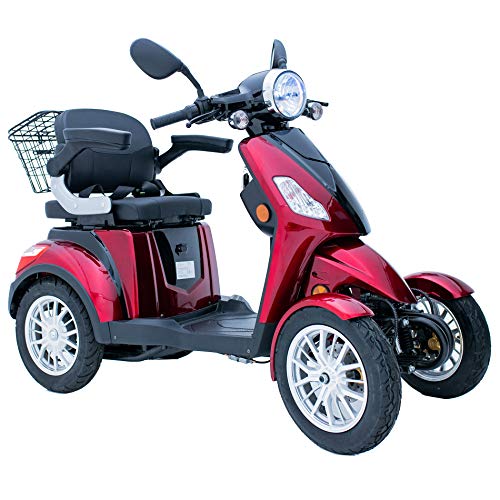Scooter Green Power
Scooters offer a fun and safe way to travel. They're also environmentally friendly. However, it's important to do your research prior to buying one.
Despite being carbon-free at face value scooters come with hidden costs. The production and mining of the batteries that power electric scooters generates significant emissions. Shipping scooters from where riders leave them to charging stations is also a contributor to their environmental footprint.
Battery Life
The battery is among the most important components of any scooter, and it has a big impact on how green your scooter is. This is because when the battery dies it releases toxic substances into the air, which can have a major ecological and economic impact.
Electric scooters are extremely energy efficient. They use a only a fraction of the energy used by cars to travel the same distance. This reduces carbon dioxide and climate change, and it can also help avoid congestion in traffic. They still produce a small amount when charging. If the energy is derived from renewable sources, this could make e-scooters more eco-friendly.
Additionally, many scooters have swappable batteries which can be used with other scooters in a fleet, reducing the need for companies to transport them for recharging. Some companies are also testing with hyper local energy production, which allows the grid to use the power stored in batteries to balance supply and demand.
If you are planning to utilize your scooter for longer excursions and longer distances, you might want to consider buying larger capacity batteries, or a second one that can be swapped. This will let you go further without stopping to recharge the battery as often. This is especially important if you are in an area that is subject to extreme weather conditions. It is also a great idea to charge the battery prior to when you store it for several months or even weeks. Inadequately doing this could cause the battery to stop being able to hold a charge when you require it again, which can be inconvenient and dangerous.
Overall electric scooters are more eco-friendly than other vehicles or modes of transport. They emit less greenhouse gases which contribute to global warming, and require less raw materials to make. green power mobility scooters near me can be charged with clean energy, which could reduce their carbon footprint. When contemplating the sustainability of a scooter, it's important to consider its entire life cycle. This includes the manufacturing process, the energy used to charge it, as well as its disposal.
Design
Electric scooters' design can have a major impact on their environmental credibility. Scooters equipped with regenerative brake systems, like they convert energy that would be wasted otherwise into battery life, allowing them to be more efficient in their charging. Many scooters are also optimized for shorter distances, reducing the number of vehicle trips required. And, unlike traditional vehicles, scooters emit no carbon dioxide during use.
However, it is crucial to consider the environmental impacts of the entire lifecycle an electric scooter. This includes the extraction and manufacture of raw materials as well as the disposal at the end of life. The production of lithium-ion batteries is especially energy intensive, and can lead to habitat destruction, soil and water pollution, and greenhouse gas emissions. The transportation and mining raw materials can have a significant impact on the environment.

The lack of durability is another major problem with scooters. The average scooter lasts only a few months on the street before it is discarded. This could mean that scooter companies have to extract more aluminum and engage in more shipping and other resources-intensive activities. Since the majority of scooters are rented, not owned, the scooters need to be collected and taken to recharge stations (often by vehicles) when they are empty of juice.
Scooters could contain hazardous wastes that can cause harm to the public health and environment. If not recycled properly, the waste can end up in landfills or rivers and pose a risk to people and wildlife.
Although scooters are generally more beneficial for the environment than traditional vehicles, there are several issues that need to be addressed to make them eco-friendly. If all scooters were made from 100% recyclable material and the power that powers them is generated from renewable sources, they will be a carbon-free form of transportation.
Maintenance
The price of an electric scooter is lower than that of the typical vehicle. However, it still requires regular maintenance. The primary element is the battery pack. It must be charged regularly and replaced if it reaches the end of its lifespan. The speed controller also is a factor as well. If the speed controller is not functioning properly it can impact the performance of the scooter.
If the scooter stops or stops functioning while riding, it usually indicates that the battery pack is not working properly. A malfunctioning fuse or battery charger could be the reason. Check that the charger's indicators are green (charging) and not red (off). It is recommended to charge the scooter every time it's stored, even if you don't use it.
Another common issue is a defective normally closed brake lever switch. To test this, unplug the wire from the brake switch and connect the two terminals to the controller connector in which the wire was unplugged. If the scooter is running in a continuous manner, the switch may be malfunctioning.
Scooter companies send people out to drive cars and trucks all day long, and then bring back electric scooters that have run out of juice. This allows them to keep their fleet in good order. This service lets them recharge their batteries before the next ride. Many consumers do not have this option and have to replace their scooters if they run out of juice.
